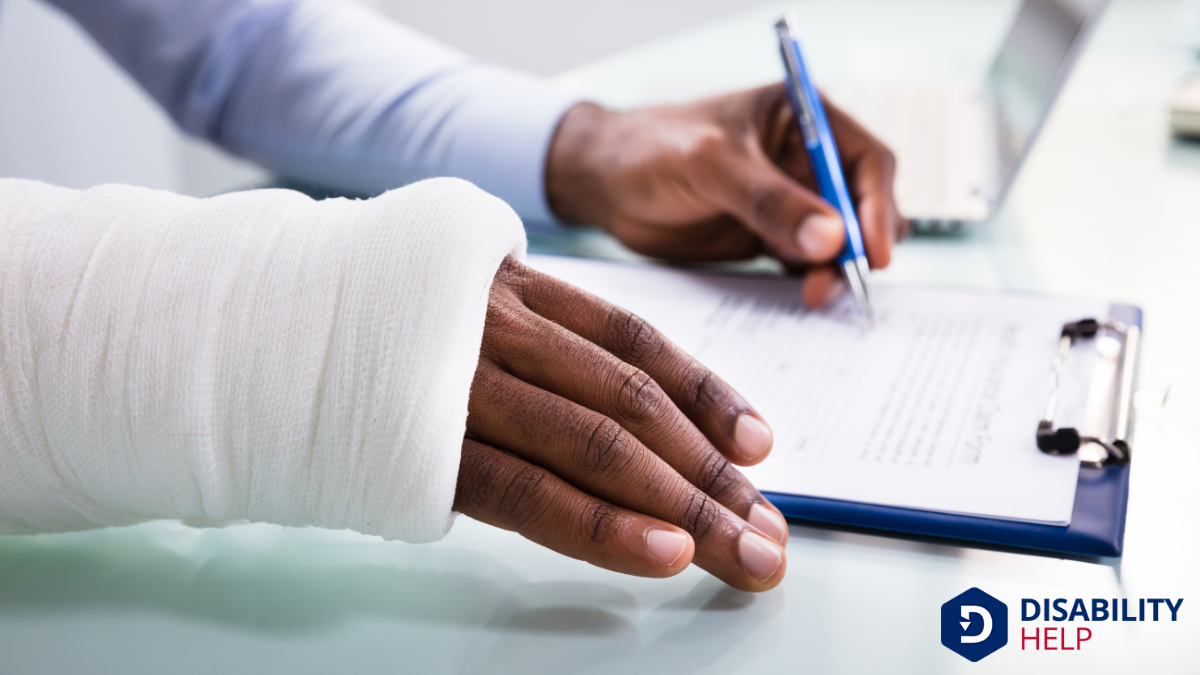When we talk about comparative negligenceA legal concept where a party fails to exercise reasonable care, resulting in harm to another person..., we're diving into how fault is shared in an accident and how that impacts what we can claim. This concept can drastically change the amount we're eligible to receive, depending on our level of responsibility. If we're partially to blame, our compensation might take a hit. Curious about how this works in different states and how we can maximize our claim despite shared fault? Let's explore further.
Key Takeaways
- Comparative negligence reduces your compensation by your percentage of fault in the accident.
- If your fault exceeds 50%, some states bar you from recovering any damages.
- Collecting strong evidence is crucial to minimize your fault percentage and maximize compensation.
- Different states have varying rules, affecting how comparative negligence impacts your claim.
- Legal professionals can help navigate complexities and negotiate better settlements in comparative negligence cases.
Understanding Comparative Negligence
When we explore the concept of comparative negligence, it's important to grasp its core purpose: to fairly allocate fault among parties involved in an accident.
We often find ourselves asking, "How does this affect our claim?" Understanding comparative negligence means recognizing that each party's responsibility is assessed, allowing us to see how fault impacts compensation.
If we're partially at fault, our compensation might be reduced proportionally. This principle guarantees that everyone takes responsibility for their actions, creating a more just outcome.
By understanding this, we can better navigate the claims process, anticipate potential outcomes, and make informed decisions.
It's essential to be aware of how our actions contribute to an accident, as it directly influences our claim's success and fairness.
Types of Comparative Negligence Systems

Having grasped the foundational elements of comparative negligence, let's consider how different legal systems apply this concept.
Primarily, there are three types: pure comparative negligence, modified comparative negligence, and slight/gross negligence.
In pure comparative negligence, we can recover damages even if we're 99% at fault; our recovery simply reduces by our degree of fault.
Modified comparative negligence, however, follows either a 50% or 51% bar rule. If we're equally or more at fault, recovery isn't possible.
Meanwhile, slight/gross negligence is less common, allowing recovery only if our fault is considered slight compared to the other party's gross negligence.
Understanding these distinctions helps us navigate the claims process more effectively, knowing what to expect based on jurisdictional laws.
Determining Fault in an Accident
When we're faced with determining fault in an accident, collecting evidence is an essential first step.
We must pay close attention to witness statements, as they provide valuable insights into what happened.
Analyzing the accident scene thoroughly allows us to piece together the sequence of events and identify the responsible parties.
Evidence Gathering Techniques
Determining fault in an accident often hinges on the thoroughness of evidence-gathering techniques. When collecting evidence, we must prioritize accuracy and detail.
Start by documenting the scene with photographs. Capture the positions of vehicles, road conditions, and any visible damage. It’s important to emphasize any traffic signals or signs in the vicinity. We should also collect contact information from all involved parties, including their insurance details.
Recording details such as the time, weather, and any potential distractions is essential. We can sketch a diagram of the accident scene to provide a clear visual reference.
Additionally, preserving any digital data, like dashcam footage, can be invaluable. By methodically gathering this evidence, we strengthen our position in determining fault and supporting our claim.
Witness Statements Importance
While a thorough collection of physical evidence sets a solid foundation, witness statements play a vital role in determining fault in an accident. They help us piece together the sequence of events from diverse perspectives. Witnesses may have noticed details we missed, providing a more complete picture of what occurred. Their accounts can corroborate or challenge the physical evidence, adding depth to our understanding.
Getting detailed statements as soon as possible is important since memories fade over time. We should ask open-ended questions to encourage witnesses to share extensive narratives. By capturing these insights, we strengthen our claim and clarify responsibility.
Let’s remember that collecting honest and unbiased accounts is essential. When we efficiently gather witness statements, we enhance our position in resolving claims.
Accident Scene Analysis
To truly understand who’s at fault in an accident, we must meticulously analyze the accident scene. This means examining every detail, as each piece of evidence can greatly impact the outcome of a claim.
We begin by observing the positions of the vehicles involved. Their final resting spots can suggest the accident's dynamics. Skid marks on the road can indicate sudden braking or swerving, offering clues about driver reactions.
Additionally, we should consider road conditions, visibility, and traffic signals, as they might've contributed to the incident.
Photographs and diagrams are invaluable, helping us visualize the scene later. By combining this information with witness statements, we can construct a more accurate narrative, determining fault and understanding how comparative negligence might affect our claim.
Impact on Compensation Amounts
When evaluating the impact of comparative negligence on compensation amounts, it's essential to understand how this legal doctrine can alter a settlement.
Fundamentally, comparative negligence determines the degree of fault each party holds in an incident. If we're found partially responsible, our compensation may be reduced by our percentage of fault. For instance, if we're 20% at fault and the total damages are $10,000, we'd receive $8,000 instead.
It's imperative to know that in some states if we're over 50% responsible, we mightn't receive any compensation at all. Understanding this can help us manage expectations and strategize effectively.
State-Specific Laws and Regulations
As we explore state-specific laws and regulations, we'll notice that comparative negligence rules vary considerably across jurisdictions.
Some states impose fault percentage thresholds, which determine whether a claimant can recover damages based on their level of fault.
It's essential for us to understand these legal precedents, as they directly affect how claims are settled in different states.
Comparative Negligence Rules
Although the concept of comparative negligence might seem straightforward, the rules governing it vary considerably from state to state, impacting how claims are handled.
We must understand these differences to properly navigate our claims. Some states follow a "pure" comparative negligence system, where we can still recover damages even if we're mostly at fault.
Other states adopt a "modified" approach, which may limit or bar recovery if our fault exceeds a certain percentage.
Knowing the specific rules in our state is essential because it influences our potential compensation.
In some places, damages are reduced by our fault percentage, while in others, we might be entirely barred from recovery.
Being aware of these nuances helps us make informed decisions and effectively pursue our claims.
Fault Percentage Thresholds
Understanding the rules of comparative negligence sets the stage for examining fault percentage thresholds in different states.
These thresholds determine whether we can recover damages if we're partially at fault. Some states follow a "pure" comparative negligence rule, allowing us to recover damages even if we're 99% at fault. Others adopt a "modified" approach, which imposes specific fault limits.
- 50% threshold: Many states require that we're not more than 50% at fault to claim compensation.
- 51% threshold: A few states set the bar higher, disallowing recovery if we're more than 51% at fault.
- State variations: Each state has unique rules, so understanding local laws is essential to know how they affect our claim.
State-Specific Legal Precedents
When examining state-specific legal precedents, it's vital to recognize that each state crafts its own set of laws and regulations regarding comparative negligence.
We must understand that some states follow a "pure" comparative negligence rule, allowing us to recover damages regardless of our fault level. Others adhere to a "modified" rule, where recovery is only possible if our fault is below a certain threshold, typically 50% or 51%.
A few states even maintain a "contributory negligence" standard, barring any recovery if we're even slightly at fault.
Strategies for Maximizing Your Claim

To maximize your claim in a comparative negligence case, we must carefully gather and present evidence that clearly demonstrates the extent of the other party's fault. Our goal is to guarantee their responsibility is undeniable.
First, we'll collect witness statements that corroborate your version of events. Eyewitnesses can provide an unbiased account of what transpired, strengthening our case.
- Gather photographic evidence: Photos of the scene, damages, and injuries can vividly illustrate the incident.
- Secure expert testimony: Professionals can analyze and explain technical aspects, bolstering our position.
- Maintain thorough documentation: Keep records of medical treatments and expenses to clarify your losses.
Common Misconceptions About Comparative Negligence
While preparing to strengthen our case, we must also address common misconceptions about comparative negligence that might cloud our understanding.
One common myth is that if we’re partly at fault, we can’t recover any damages. In reality, comparative negligence allows us to seek compensation even if we share some blame, though the amount might be reduced.
Another misunderstanding is the belief that comparative negligence is the same in every state. In truth, laws vary, with some states applying pure comparative negligence and others using modified versions.
Finally, people often think that fault distribution is fixed, but it’s usually determined through negotiation or court decisions. Understanding these nuances helps us approach our case with clearer expectations and a stronger position.
Working With Legal Professionals to Navigate Your Claim
Maneuvering the complexities of a legal claim can be overwhelming, which is why enlisting the expertise of legal professionals is invaluable. They guide us through the intricacies of comparative negligence, making certain we comprehend our rights and responsibilities.
By working with a skilled attorney, we enhance our chances of a favorable outcome. They help clarify how negligence is assessed and what it means for our claim.
- Maximize Compensation: Lawyers make certain we receive the compensation we deserve by accurately evaluating our claims.
- Expert Negotiation: They skillfully negotiate with insurance companies, preventing us from settling for less.
- Legal Strategy: Professionals craft a robust legal strategy that aligns with our best interests and the specifics of our case.
With their support, we navigate our claim with confidence.
Conclusion
In maneuvering the complexities of comparative negligence, we must understand how fault impacts our claims. By familiarizing ourselves with different systems and state-specific laws, we can better position ourselves to maximize compensation. Let’s not fall for common misconceptions and instead work closely with legal professionals to guarantee our rights are protected. Together, we can make informed decisions and pursue the compensation we deserve, even when fault is shared.






